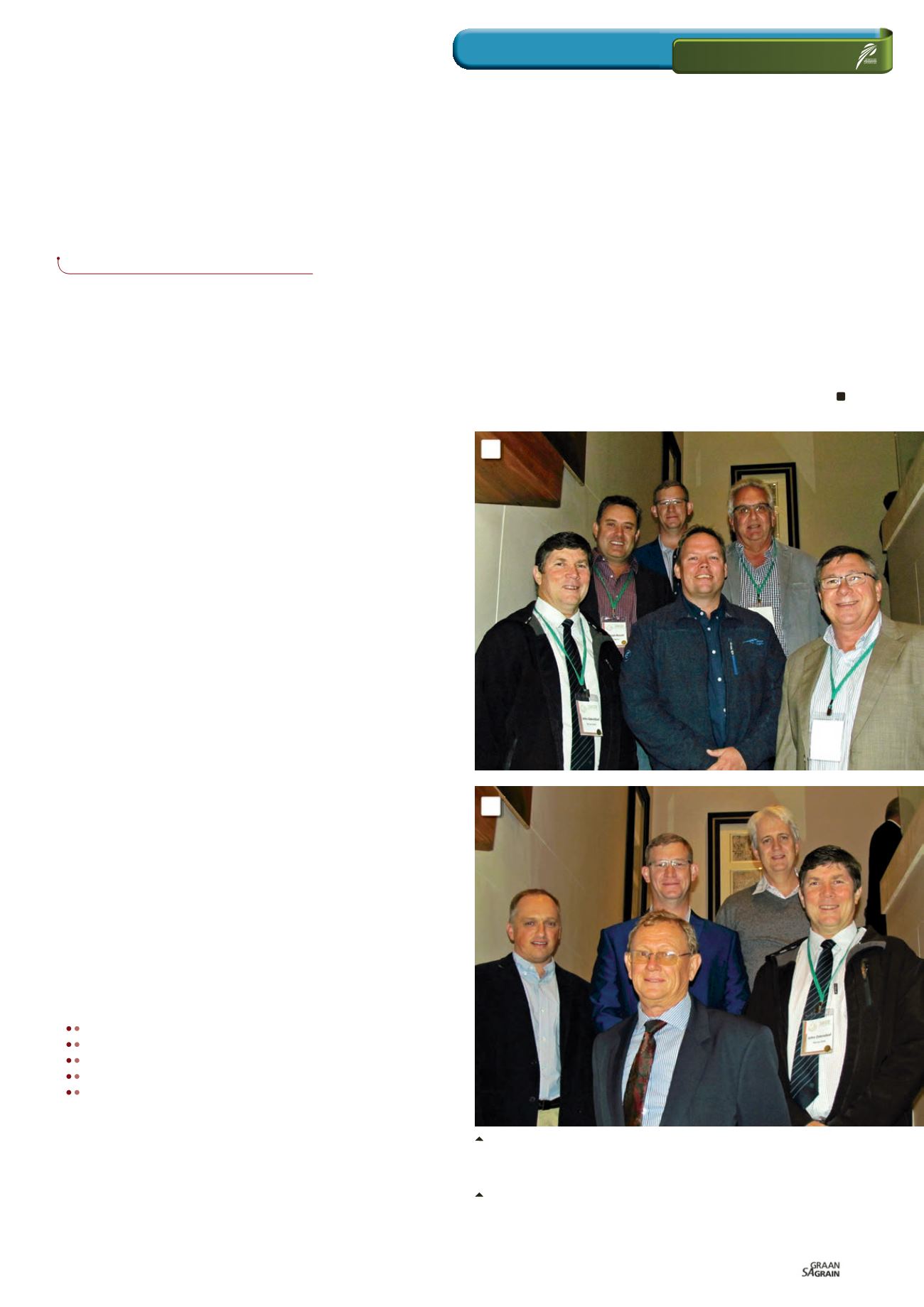

SANSOR holds its annual congress
T
he South African National Seed Organisation (SANSOR)
held its 28th Annual Congress on 4 and 5 May this year in
Oubaai in the Western Cape. The new leadership of the or-
ganisation where also elected.
Mr John Odendaal, the chairman of the Agronomy Division high-
lighted the following from the past year:
‘The effects of the strong El Niño phenomenon during the 2015/2016
season were felt well into the 2016/2017 season as producers in
many areas, but particularly the west, endeavoured to recover from
the economic impact of the consequent drought, which was one of
the worst in recent memory.
‘Commercial crop areas which had a negative impact on indus-
try seed sales – particularly maize which dropped to 1,947 mil-
lion hectares and soybeans which dropped sharply off the rapid
growth trend of the past few years – bounced back in the 2016/2017
season.
‘Sunflower plantings, which were higher than normal in the
previous year mainly as a result of late plantings in the west, re-
turned to more or less normal hectares in 2016/2017.
‘Commodity prices responded, in particular white maize which
peaked briefly over R5 000/ton as a result of reduced planting in
the west. Yellow maize prices were significantly lower, but still high.
‘The increased plantings and anticipated good general yields during
the 2016/2017 season have however seen the trend reversed with
prices likely to drop below the R2 000/ton mark this season.
‘One of the main achievements of the Agronomy Division Commit-
tee during the past season was SANSOR’s contributing towards
the implementation of the wheat and barley end point royalty.
'It was successfully published in the Government Gazette in
September 2016 and came into effect on 1 October 2016. SANSOR
currently have two representatives on the board of the South African
Cultivar and Technology Agency (SACTA).
‘During the past year, the Agronomy Division held its customary
biannual meetings, the first taking place on 2 August 2016 and the
second on 2 February 2017.
‘Priority issues included:
Maize seed exports to the USA.
Conditioning for the purposes of propagation.
The new data statistics model.
Maize Lethal Necrosis Disease.
Canola tariff.
‘Following the recent confirmation of fall army worm, a quarantine
pest that holds threats for both local agriculture and international
trade at several locations in South Africa, SANSOR management has
been very proactive in working with the Department of Agriculture,
Forestry and Fisheries (DAFF) and Grain SA in developing manage-
ment strategies for the pest. This will continue to remain a priority.
Support for the implementation of the soybean end point royalty will
remain another key focus area.
‘Another important pending issue is that an application for the reduc-
tion in rate of duty on the import of canola seed will be submitted
in early 2017. SANSOR has procured the services of a consultant
to represent and support a SANSOR member for the purposes of
this application. The application is detailed and the process arduous
and time consuming. As an industry, we are grateful for the support
of Agricol and the SANSOR secretariat in facilitating a solution.’
99
August 2017
RELEVANT
CORNÉ LOUW,
senior economist: Grain SA
1: SANSOR Board of Directors. Front: John Odendaal (Pannar Seed)
– chairman, Max Hildebrand (Syngenta SA) and David Malan (Klein Karoo
Seed Marketing). Back: Riaan Roselt (Agricol) – vice-chairman, Piet Smit
(Monsanto SA) and Brian Lever (AGT Foods Africa).
2: The new Agronomy Division of SANSOR. Front: Whitey van Pletsen
(Agricol). Middle: Rikus Schoeman (Du Pont-Pioneer), Piet Smit – vice-
chairman and John Odendaal – chairman. Back: Patrick Graham
(Sensako). Not present: Callie Kruger (Bayer SA).
1
2

















